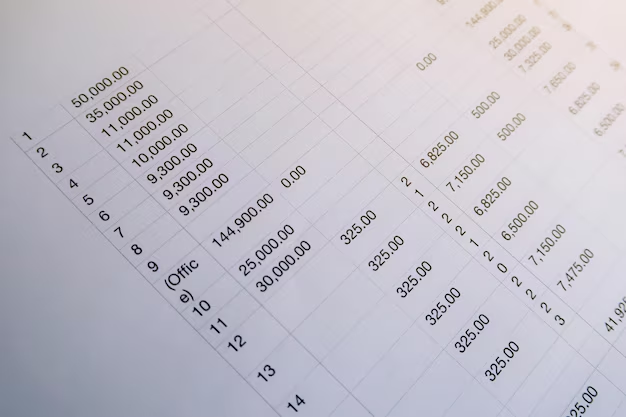Understanding ETF Expense Ratios: What Investors Need to Know
If you've ever delved into the world of investment, you've likely encountered Exchange-Traded Funds (ETFs). Known for their versatility and popularity among both novice and seasoned investors, ETFs offer a convenient way to diversify a portfolio. However, an essential component to consider when investing in ETFs is the expense ratio. This may seem like a minor detail, but it can significantly impact your investment returns over time. So, what exactly is an expense ratio, and why does it matter?
📈 What Is an ETF Expense Ratio?
An expense ratio refers to the annual fee that all mutual funds or exchange-traded funds charge their shareholders. It represents a percentage of the fund's average assets and covers operational costs, management fees, and other administrative expenses. These fees are essential for the maintenance and management of the fund, ensuring it operates efficiently.
Breaking It Down Further
- Management Fees: These are the costs associated with paying the fund's manager, research teams, and for making investment decisions on behalf of the fund.
- Administrative Fees: Cover day-to-day expenses like record keeping, custodial services, accounting, legal costs, and regulatory expenses.
- Distribution and Marketing Fees: Often referred to as 12b-1 fees, these cover promotional activities and distributing the fund’s information.
📊 How Are Expense Ratios Calculated?
The calculation of an expense ratio is straightforward:
Expense Ratio (%) = (Total Fund Costs / Total Fund Assets) x 100
This equation calculates the percentage of the fund’s assets that are deducted for covering operational costs.
🤔 Why Are Expense Ratios Important?
While the expense ratio might seem negligible at first glance, it directly reduces the fund's return to investors. This is particularly crucial for long-term investors, where even a small difference in expense ratios can lead to substantial variances in returns due to compounding.
Impact of High vs. Low Expense Ratios
- High Expense Ratios: These will take a bigger bite out of your returns. Typically found in actively managed funds where more resources are spent on research and management.
- Low Expense Ratios: Tend to be associated with passively managed funds like index ETFs, as these require less hands-on management.
🌍 Types of ETFs and Their Typical Expense Ratios
While ETFs are known for their cost efficiency compared to mutual funds, expense ratios can vary:
- Index ETFs: Often the most cost-effective, with lower expense ratios due to their passive management.
- Sector or Thematic ETFs: May have slightly higher fees due to more focused investment strategies.
- International ETFs: Can incur higher costs because they involve more complex investments and regulatory environments.
- Leveraged/Inverse ETFs: Known for higher expense ratios because of the sophisticated financial instruments they utilize.
🚀 How to Evaluate an ETF’s Expense Ratio
When evaluating whether an ETF is worth investing in, consider these factors:
- Compare within Categories: Compare the expense ratio of an ETF with others in the same category. This provides a more accurate benchmark.
- Balance Cost and Potential Returns: A higher expense ratio can be justified if the return potential significantly outweighs the costs.
- Look at Historical Performance: The net effect of the expense ratio is more relevant than the figure itself. Analyze how the ETF has performed in spite of—or perhaps because of—its costs.
💡 Practical Tips for Investors
Choosing an ETF isn’t just about the expense ratio, but here are a few tips to ensure you're making a well-rounded investment decision:
- Diversify: Don’t base your decision solely on expense ratios. A diversified portfolio can balance out high-cost funds.
- Evaluate Total Returns: Consider both the expense and the potential returns. Sometimes paying a bit more nets better performance.
- Keep Long-Term Goals in Mind: If you're investing for long-term goals, even small differences in expense ratios can accumulate into significant impacts.
A Handy Summary
Here’s a quick rundown of the key points about expense ratios:
- 📌 Expense Ratio reflects annual fees as a percentage of the fund's assets.
- 📌 Lower Ratios are generally better but should be weighed against fund performance.
- 📌 Fund Type Matters: Actively managed funds typically have higher ratios than passive index funds.
- 📌 Long-term Investing: Small differences in expense ratios impact long-term returns significantly.
🗂️ Expense Ratio Quick Reference:
| Category | Typical Expense Ratio | Characteristics |
|---|---|---|
| Index ETFs | < 0.20% | Low cost, passive management |
| Sector ETFs | 0.20% - 0.50% | Higher costs due to niche markets |
| International ETFs | 0.40% - 0.60% | Higher complexities lead to higher costs |
| Leveraged ETFs | 0.70%+ | High expense ratios due to use of derivatives and leverage |
🤝 Understanding the Broader Context
While the expense ratio is a crucial element of evaluating an ETF, understanding its broader implications on your overall investment strategy is even more critical. It’s about finding balance and ensuring every part of your portfolio aligns with your financial goals and risk tolerance.
Ultimately, being an informed investor means examining multiple factors and not letting any single metric, like an expense ratio, dominate your decision-making process. Whether you’re a seasoned investor or just stepping into the world of ETFs, understanding expense ratios can help you make wiser investment decisions that align with your financial objectives.
By keeping these insights in mind, you'll be better equipped to assess an ETF's true value and make more strategic investment choices for your portfolio.
